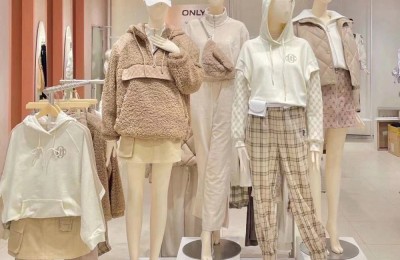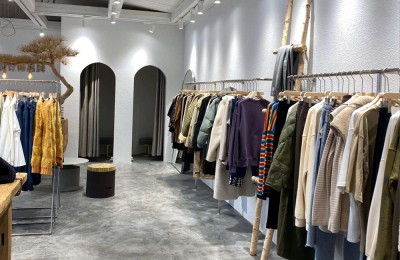From 2016 to the first half of 2018, boosted by a series of factors such as the outbreak of the textile industry’s climate cycle, environmental protection rectification, and production capacity reduction, the weaving market was really “crazy”. The most outstanding performance during this period was undoubtedly the gray fabric manufacturers. From the previous “paying for goods in arrears” to “paying in advance and waiting in line for goods”, the popularity has become the highest in history. In particular, conventional products such as polyester taffeta, pongee, nylon and other products have not only cleared out the backlog of gray fabric inventory in previous years, but it has also become the norm in the market to pick up the goods with money or wait in line.
However, starting from the second half of 2018, the “good” days of gray cloth manufacturers have gradually been suppressed. Especially since this year, gray cloth manufacturers seem to have “returned to before liberation” , facing a series of pressures such as profit compression, high inventory, and deprivation of the right to speak.
1. Processing lacks autonomy and can only earn processing fees
Since the overall textile market this year is relatively flat, based on Due to their own capital and inventory considerations, some small and medium-sized gray fabric manufacturers will choose to do OEM processing for some large weaving factories or traders.
A manufacturer with nearly 100 water-jet looms said that if it is processed on behalf of others, generally gray fabric manufacturers and cooperating weaving manufacturers and traders will sign cooperation agreements in advance. If the price of raw materials If the price rises to a certain level, traders will provide certain subsidies to gray cloth manufacturers; but correspondingly, if the price of raw materials drops sharply during this period, gray cloth manufacturers will also have to give profits to traders. Although this protects the interests of gray fabric manufacturers to a certain extent, it also limits their profit margins. In the end, they can only rely on earning processing fees to maintain normal operations; and they lack a certain degree of autonomy in product pricing and sales target comparisons. Fixed and difficult to expand.
2. Producing gray fabrics for direct sales increases capital and inventory risks
Of course, more gray fabric manufacturers on the market will choose to produce their own gray fabrics and sell them directly to local or foreign traders; some also make finished products for sale. Although the initiative is seized in this way, there are risks in quality, capital, inventory and other aspects.
When “making money every day and finding a single product is hard to come by” has become a thing of the past, gray fabric manufacturers who lack the right to speak are once again in a state of being in debt for goods. Not only is the problem of arrears serious, but also the financial pressure caused by disputes arising from quality issues cannot be underestimated. Manager Chen, a trader in Shengze, told the author that he received an order some time ago and needed a nylon fabric, so he purchased nylon gray fabric in the market. First, I consulted a large nylon spinning factory in Shengze market. The price of this nylon spinning gray fabric is 3.6 yuan/meter, but you need to bring money to pick up the goods. However, with a small gray fabric factory with long-term cooperation, the price of this gray fabric is 4 yuan/meter. , it seems expensive, but the payment cycle can be about 2 months. Generally, small gray fabric manufacturers will be chosen, but a problem arises. Due to the quality of the gray fabric, the purchaser will directly return the order for the subsequent order; then this responsibility ultimately comes down to the gray fabric manufacturer. Not only will the gray fabric arrears not be recovered, but the traders will also have to be subsidized. Dyeing fees, etc.
3. Peripheral production capacity is concentrated and inventories remain high
Since the beginning of this year, the supply of conventional fabric products has exceeded demand. Part of the reason is the concentrated release of peripheral water-jet loom production capacity. The change in production capacity has affected the supply and demand pattern of the gray fabric market. Coupled with the impact of weak terminal demand, the scale of gray fabric market orders has dropped from tens of thousands or hundreds of thousands of meters to small orders of hundreds or thousands of meters, resulting in an obvious backlog of inventory by gray fabric manufacturers; according to China According to statistics from Silkdu.com, the inventory of gray fabrics has now risen to about 42 days, which is at a high level during the year.
The inventory backlog is bound to have an impact on product pricing, and ” It can go down, but it can’t go up.” According to the author’s chat with a weaving manufacturer owner, taking a 75D28T chiffon beaded gray fabric as an example, the price of this gray fabric was 3.8 yuan/meter at the beginning of this year, but now the price has dropped to about 3.4 yuan/meter; This kind of product is mainly driven by sales, with small profits but quick turnover. In just a few months, the price has dropped by nearly 11%, which has basically consumed the manufacturer’s profits. However, considering that the oversupply of conventional products on the market will not be alleviated for a while, gray fabric manufacturers can only reduce prices and clear inventory to alleviate the pressure on funds and inventory.
4. Small and medium-sized manufacturers lack the ability to upgrade, and profit compression is obvious
Nowadays, conventional products seem to be more obviously suppressed, which also means that small and medium-sized gray fabric manufacturers that lack the ability to upgrade are under greater pressure and their profit margins are being squeezed. It is understood that the daily net profit of a conventional water-jet loom was around 50-60 yuan in the first two years. In March-April 2018, the machine profit once rose to 100-120 yuan/unit, and some were slightlyIt is on the high side; but since this year, the net profit of conventional water-jet looms has gradually been compressed, with profits only at 10-20 yuan, and even losses.
In the final analysis, the market still needs differentiated products, such as the development of products with high added value. However, generally small and medium-sized gray fabric manufacturers have relatively weak R&D capabilities, and the products they produce are relatively simple and not highly technical. Especially when the market is sluggish, most gray fabric manufacturers are struggling with rare profits and financial pressure caused by inventory backlog.
In any case, after all, the market is now in the off-season in August. It is a bit premature to draw a conclusion on the market situation. Textile enterprises do not need to worry too much. Perhaps the peak season will arrive inadvertently. There may still be hope for the Golden Nine and Silver Ten to alleviate the pressure on small and medium-sized gray fabric manufacturers. </p






